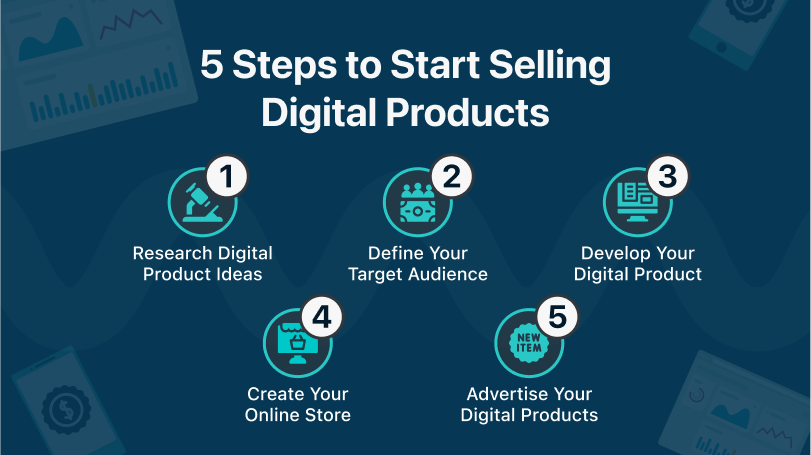Imagine waking up to sales notifications from customers across time zones—all while your digital products deliver automatically, requiring zero inventory or shipping. That’s the freedom of building a digital product store. Whether you’re a creator, entrepreneur, or side-hustler, launching an online store for ebooks, courses, templates, or software unlocks passive income and global reach. But where do you start? This practical guide walks you through how to build a digital product store systematically, avoiding costly mistakes 80% of beginners make.
Step-by-Step Guide to Build a Digital Product Store
Creating a profitable digital storefront demands strategy—not just tech setup. Follow these battle-tested phases based on real-world data from platforms like Shopify and DigitalCommerce360, which report 23% YoY growth in digital product sales.
Step 1: Validate Your Product-Market Fit
- Research demand: Use Google Trends, Ubersuggest, or AnswerThePublic to identify gaps. Example: Searches for “Canva templates for bloggers” grew 65% in 2023.
- Pre-sell your product: Launch a landing page via Carrd or Gumroad offering pre-orders. If 5-10% of visitors convert, proceed.
- Analyze competitors: Study top sellers on Etsy or Podia. Note pricing, features, and reviews.

Step 2: Choose Your E-Commerce Platform
Compare key platforms using this framework:
| Platform | Best For | Transaction Fees | Customization |
|---|---|---|---|
| Shopify | Scalability | 2.9% + 30¢ | High |
| Gumroad | Beginners | 10% (+3.5%+30¢) | Low |
| WooCommerce | WordPress Users | Payment gateway fees | Unlimited |
| Podia | Courses/Memberships | $0 after $39/mo | Medium |
Pro Tip: Start with Gumroad for simplicity, then migrate to Shopify or WooCommerce as sales grow.
Step 3: Design High-Converting Product Pages
- Use benefit-driven headlines: Instead of “SEO Checklist,” try “Rank Page 1 Faster: 37-Point SEO Audit Template.”
- Add demo videos: Loom screen recordings boost conversions by 20% (Wistia 2024 data).
- Leverage scarcity: “Limited at $49” or “Version 2.0 launches June 30—price increases then.”
Step 4: Set Up Frictionless Payments & Delivery
- Payment gateways: Stripe (global) or PayPal (trust factor). Enable one-click upsells via SamCart.
- Automated delivery: Use SendOwl or Sky Pilot for instant access links, license keys, or drip content.
- Tax compliance: Quaderno automates EU VAT or U.S. sales tax calculations.
Step 5: Launch With Momentum-Building Tactics
- Pre-launch waitlists: Collect emails via ConvertKit offering a free mini-course.
- Limited-time bonuses: Bundle 3 stock photos with every template purchase for the first 100 buyers.
- Leverage affiliates: Recruit micro-influencers via UpPromote for 15-30% commission per sale.
Essential Tools to Optimize Your Store
Streamline operations with these underrated tools:
- Canva: Design product thumbnails and social media assets
- Zapier: Connect your store to email tools (e.g., MailerLite) for automated onboarding sequences
- Tidio: Add AI chatbots to handle 40% of customer queries pre-sale
- Google Analytics 4: Track “file download” events to measure true conversion rates
Case Study: Sarah Chen, a nutritionist, used Teachable and ConvertBox to scale her meal-plan store to $12k/month by solving checkout friction for mobile users.
Lil Nas X Released on Bond After Naked Arrest Incident in Los Angeles
Scaling Beyond Your First 100 Sales
Once revenue stabilizes:
- Repurpose top sellers: Turn an ebook into a video course or community membership.
- Run retargeting ads: Use Meta’s Advantage+ campaigns targeting past buyers with new releases.
- Expand globally: Localize pricing via Wise or integrate multilingual support with Weglot.
Always test iteratively. As reported by the Baymard Institute, simplifying checkout flows can recover 35% of abandoned carts.
Building a digital product store transforms ideas into automated income—but only if you prioritize validation, frictionless UX, and strategic scaling from day one.
FAQs: Launching Your Digital Store
Q: How much does it cost to build a digital product store?
A: You can launch for under $50/month using Gumroad (free tier) or WooCommerce ($10 hosting + $5 domain). Premium platforms like Shopify start at $29/month. Always budget 3-5% for payment processing fees.
Q: Which legal requirements apply to digital stores?
A: At minimum, you need:
- Terms of Service (ToS) outlining refund/usage rights
- Privacy Policy compliant with GDPR/CCPA
- Tax registration if selling in your home country
Use Termly.io for automated policy generation.
Q: How do I protect digital products from piracy?
A: Apply watermarking (Adobe Acrobat Pro), DRM via LicenseSpring, or password-protect ZIP files. However, balance security with user experience—overly restrictive measures hurt reviews.
Q: What’s the fastest way to market a new digital store?
A: Focus on communities where your audience already gathers: Reddit subgroups, niche Facebook Groups, or LinkedIn forums. Offer value-first (e.g., free templates), then gently promote paid products.
Q: Can I sell digital products internationally?
A: Yes! Platforms like Paddle handle global payments and taxes. Optimize for non-English audiences by accepting local payment methods like Alipay or iDEAL.
Q: How do I handle customer support for digital products?
A: Use Help Scout or Zendesk to organize queries. Pre-empt 80% of issues with detailed FAQs and video tutorials. Charge for 1:1 support to filter low-intent requests.
Disclaimer: This article outlines general steps for informational purposes. Tax regulations, platform fees, and legal requirements vary by location. Consult legal or financial professionals for your specific circumstances.
iNews covers the latest and most impactful stories across
entertainment,
business,
sports,
politics, and
technology,
from AI breakthroughs to major global developments. Stay updated with the trends shaping our world. For news tips, editorial feedback, or professional inquiries, please email us at
[email protected].
Get the latest news and Breaking News first by following us on
Google News,
Twitter,
Facebook,
Telegram
, and subscribe to our
YouTube channel.



